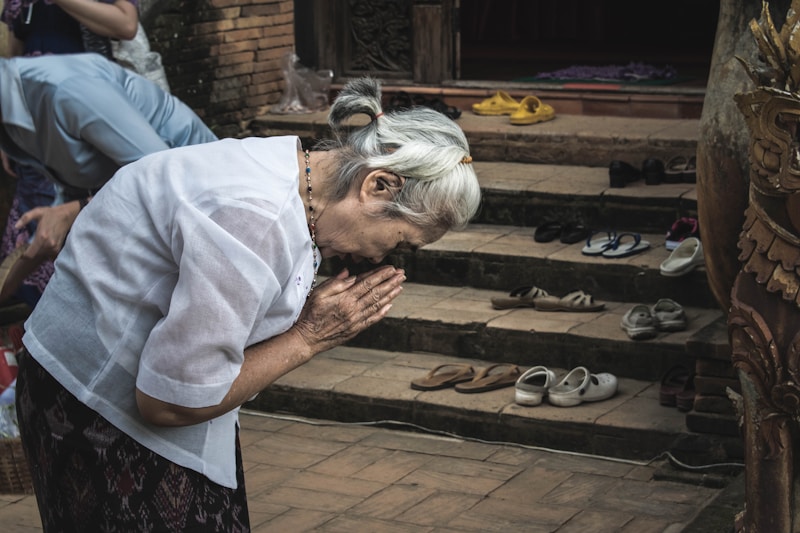9 Questions
What is the primary focus of Shinto?
What is the relationship between Buddhism and Shinto?
What is the law of the natural order in Shinto called?
What is the role of Shinto priests?
What is misogi in Shinto?
What are ema in Shinto?
What are matsuri in Shinto?
What is the primary difference between Shinto and Buddhism?
What is the purpose of a kamidana in Japanese households?
Summary
Shinto is a religion from Japan, classified as an East Asian religion by scholars of religion, and regarded by its practitioners as Japan's indigenous religion and as a nature religion. It is polytheistic and animistic, revolving around supernatural entities called the kami, which are believed to inhabit all things, including forces of nature and prominent landscape locations. Shinto has no central authority in control, and there is much diversity of belief and practice evident among practitioners. The religion places a major conceptual focus on ensuring purity, largely by cleaning practices such as ritual washing and bathing, especially before worship. Little emphasis is placed on specific moral codes or particular afterlife beliefs, although the dead are deemed capable of becoming kami. Buddhism entered Japan at the end of the Kofun period and spread rapidly, and religious syncretization made kami worship and Buddhism functionally inseparable, a process called shinbutsu-shūgō. During the Meiji era, Japan's nationalist leadership expelled Buddhist influence from kami worship and formed State Shinto, which some historians regard as the origin of Shinto as a distinct religion. Shinto is primarily found in Japan, where there are around 100,000 public shrines, although practitioners are also found abroad. Shinto is often cited alongside Buddhism as one of Japan's two main religions, and the two often differ in focus, with Buddhism emphasising the idea of transcending the cosmos, which it regards as being replete with suffering, while Shinto focuses on adapting to life's pragmatic requirements.Overview of Shinto beliefs and practices
-
Shinto seeks to cultivate a harmonious relationship between humans and kami (spirits), including malevolent kami who can be dissuaded from destructive actions through offerings and prayers.
-
Kami are not metaphysically different from humans, and dead humans can become venerated as kami, including the Emperor Ōjin.
-
Many kami have multiple shrines across Japan, and the establishment of a new shrine to a kami who already has one is called bunrei ("dividing the spirit").
-
Shinto cosmology includes malevolent spirits, restless ancestral spirits, and animal-like creatures who can take human form.
-
The origin of the kami and of Japan is recounted in two 8th-century texts, Kojiki and Nihon Shoki, drawing heavily on Chinese influence.
-
Modern Shinto places greater emphasis on this life than on any afterlife, although it espouses belief in a human spirit or soul and ancestral spirits who reside in the mountains.
-
A key theme in Shinto is the avoidance of kegare (pollution or impurity) and ensuring harae (purity), with purification ceremonies such as misogi (immersion in water) and oharae (ceremony of great purification).
-
Shinto incorporates morality tales and myths, but no codified ethical doctrine, with emphasis placed on sincerity, honesty, hard work, and thanksgiving directed towards the kami.
-
Kannagara (the way of the kami) is the law of the natural order, with wa (benign harmony) inherent in all things, and disrupting wa is deemed bad.
-
Shinto focuses on ritual behavior rather than doctrine, with around 100,000 public shrines in Japan.Overview of Shinto Shrines and Practices
-
Shinto shrines are places of worship for the kami, or spirits, in Japan.
-
There are around 80,000 Shinto shrines in Japan, with 20,000 being unaffiliated.
-
Shrines are found all over the country, from isolated rural areas to dense metropolitan ones.
-
Shrines typically consist of complexes of multiple buildings, with the inner sanctuary in which the kami lives being the honden.
-
Worshippers carry out their acts outside of the honden, and near the honden, there can be a subsidiary shrine, the bekkū, to another kami.
-
Shrine entrances are marked by a two-post gateway with either one or two crossbeams atop it, known as torii.
-
Shinto priests are known as kannushi, and many take on the role in a line of hereditary succession traced down specific families.
-
Priests are assisted by jinja miko, sometimes referred to as "shrine-maidens" in English.
-
Visits to the shrine are termed sankei or jinja mairi, and individuals usually approach the honden, placing a monetary offering in a box and then ringing a bell to call the kami's attention.
-
Shinto rituals begin with a process of purification, or harae, using fresh water or salt water, this is known as misogi.
-
After purification, petitions known as norito are spoken to the kami, followed by an appearance by the miko.
-
Offerings are presented to the kami by being placed on a table, followed by a feast held inside a banquet hall attached to the shrine complex.Overview of Shinto Practices and Beliefs
-
Shinto is a religion native to Japan and involves the worship of kami, or spirits, that are believed to inhabit natural objects and phenomena.
-
Shinto shrines are found throughout Japan and are considered the homes of the kami. They are often marked by a torii gate.
-
Shinto rituals involve purification, offerings, and prayers. Visitors to shrines are expected to sit in the seiza style during rituals.
-
Many Japanese households have a kamidana, or kami shelf, in their home and may also have a butsudan, a Buddhist altar enshrining their ancestors.
-
Shinto practices involve the use of amulets, divination, and ema, small wooden plaques on which practitioners write their wishes for the kami.
-
Kagura refers to the music and dance performed for the kami and is regarded as having the capacity to pacify them.
-
Public festivals, known as matsuri, are a central act of Shinto worship and often mark the seasons of the agricultural year and involve offerings being directed to the kami in thanks.
-
Shinto rituals are given great importance in Japanese culture, with rites of passage such as hatsumiyamairi and seijin shiki marking significant life events.
-
Funerals tend to take place at Buddhist temples in Japan, although Shinto funerals do exist and were promoted by the Meiji government in the 19th century.
-
Shinto practices are deeply intertwined with Japanese culture and remain an important aspect of Japanese religious tradition.
Description
Do you know about Shinto, Japan's indigenous religion? Take this quiz to test your knowledge on Shinto beliefs, practices, and shrines. Discover the origins of the kami and their relationship with humans, the significance of purification ceremonies, and the rituals involved in worshiping at a Shinto shrine. Learn about the importance of harmony, morality tales, and myths in Shinto, as well as the role of festivals and kagura in pacifying the kami. Test your knowledge of Shinto


